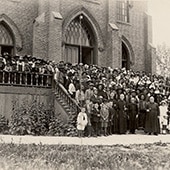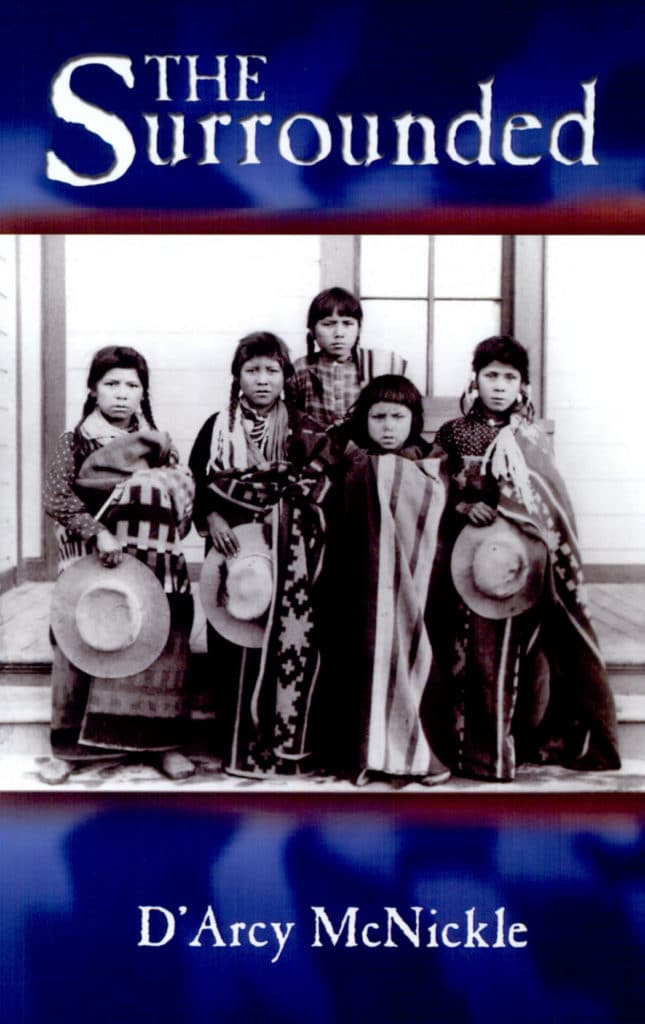Photo: #D22, provided by the D’Arcy McNickle Library at Salish Kootenai College.

The Surrounded: St. Ignatius (St. Xavier)
The mission town of St. Xavier belonged to two ages. The opening up of the Indian reserve brought new townsmen and new houses. The newcomers, after one look at what was before them, moved on and erected their neat clapboard bungalows on the opposite side of Buffalo Creek. Over there they laid a few cement sidewalks, hid their outhouses in woodsheds, planted round flower beds and ran fences around their lots. That was the ‘Townsite,’ the up-to-date quarter. The old town, which was usually called Indian-Town, was left to itself, but not out of mercy. Its lack of plan and of sanitation saved it. (35)
McNickle, D’Arcy. The Surrounded. Albuquerque: University of New Mexico Press, 1936.

About the Book
The Surrounded
McNickle spent nine years writing and rewriting The Surrounded. An earlier manuscript, The Hungry Generations, was published in 2008. During his lifetime McNickle was a leading expert in ethnic studies. But he will be remembered most as a ground-breaking writer.
In the Salish language, St.Ignatius is called Snyel’mn, which translates into English: “Place Where You Surround Something.” This description lends itself well to both the title and the theme of McNickle’s novel.
While the settings in The Surrounded are clearly drawn from actual locales, it is understood that the novel—including its places—is ultimately the product of the author’s imagination. The intent of this literary map is to enrich the reading experience by interpreting those places, not to render them literally or definitively.

About the Author
D’Arcy McNickle
D’Arcy McNickle was born in Montana in 1904 to a white father and a Metis mother. His 1936 novel The Surrounded is the story of Archilde Leon, a troubled young man who returns to the reservation and is caught up in family and community conflicts. McNickle chronicles shifting relationships between Europeans and Native Americans on a fictional version of the Flathead Indian Reservation. The novel was named the 2009 One Book Montana selection and is considered an early masterpiece of Native American fiction.
